| GROUP RIDING |
|
Let’s Ride and Have Fun!
All H.O.G. 411 chapter rides are led by a designated Road Captain (RC) and are modeled after the guidelines in the Harley Davidson H.O.G. Handbook and the H.O.G. 411 RC Manual. The lead RC will be at the head of the group and is responsible to facilitate and coordinate all aspects of the ride. A rear RC (sweep) is responsible for assisting with the overall safety and welfare of the riders, including identifying and reporting problems and addressing breakdowns. Additional RCs and sweeps may be designated per the discretion of the lead RC.
Group Riding Guidelines:
These guidelines are intended to serve as basic recommendation for most group riding situations. Remember, you have the ultimate responsibility for your safety, and to always ride within your abilities and that of your machine.
Thunder Mtn. Chapter H.O.G 411 has an alcohol free policy. Anyone who consumed alcohol before or consumes alcohol during a chapter ride will not be allowed to ride with the group.
- Arrive 30 minutes prior to the departure of the ride with a full tank of fuel.
- Make sure your vehicle is in good operating condition.
- Attend the pre-ride meeting where the RC should provide the following information: route, planned stops, ending destination, hand signals, ride level, and other pertinent information.
Required Release forms:
- All riders must sign a Chapter Event Release Form for Adults and sign in on the Ride Attendance sheet prior to the ride.
- New Riders or Riders New to Group Riding are encouraged to communicate with the RC before the ride leaves. They may position you at the rear of the group, in front of the sweep, per the discretion of the RC.
- Minors (under 12 yrs) need a signed Chapter Event Release Form for Minors signed by a parent or legal guardian. Note: grandparents are generally not the legal guardian and therefore may not be able to sign the forms.
- Minors (12-17 yrs) A Minor's Assumption of Risk Acknowledgment is also required.
- All guests are required to sign necessary waiver release forms prior to participating in a chapter ride.
|
|
Riding Formation:
Unless specified by lead RC, all rides will be conducted in staggered riding formation for safety reasons. The lead motorcycle will be in the left 1/3 of lane, the second motorcycle should be in the right 1/3 of the lane, one second behind the first rider, and so on. Always stay in line with the bike in front of you. If a gap needs to be filled, wait for the staggered motorcyclist to the left or right of you to wave you forward. Do not crossover the lane. |
 |
|
 |
Changing Lanes as a Group:
The way to accomplish a lane change as a group is for the last bike (sweep) to move one lane to the left and hold his position, after the lead RC has indicated a lane change. Each rider should move to the left lane (back to front of group) as the traffic clears. You can then pass the slow car as a group.
The lead RC should move back to the right lane after passing the slow car by a safe distance. Each rider should move back to the right lane one at a time once safely clearing the slow car.
|
|
Passing on a Two Lane Road:
It is usually very difficult for a group to pass a slow moving car on a two lane road. Generally the group will not pass a car on a two lane road, particularly on local rides, unless it is going very slow. If the lead RC decides to pass the car, each motorcyclist must decide on his own if it is safe for him or her. DO NOT follow the bike in front of you unless you are certain that it is safe for you to do so. After passing the car, keep going to make room for the entire group of motorcycles behind you. Should the group become separated, regroup when it is safe to do so. |
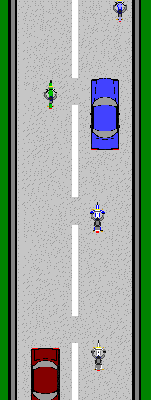 |
|
 |
Stopping as a Group at an Intersection:
When stopping as a group at an intersection, break stagger formation and pull up beside the rider in the adjacent lane. This will reduce the length of the group by half. Stay in this formation until you are through the intersection. Because the group is half as long it will take half the time to clear the intersection and increase the odds of keeping the group intact.
If you cannot safely make it through the intersection with the group, STOP. Do not take a chance and run a red light. The lead RC will slow down and allow time for the separated riders to regroup. If need be, the sweep may lead the separated riders until they can safely regroup.
|
|
|
Group Parking:
Parking in an orderly method substantially reduces the time for all to get off the road and out of traffic. There is risk of injury for the last riders that may be blocking the road in an attempt to stay with the group.
A good way to park is for each rider to pull ahead of the intended parking place and then back up into your spot. This can be done fairly fast since you do not have to wait for the rider ahead of you to finish backing.
For bagger drivers, don't forget your pipes. Everything is cool when you back up to the curb until you lean your bike over on the side stand and you bend and scratch your left pipe on the curb.
|
 |
|
|
|
Unscheduled or Emergency Stops:
It is unsafe for a large group of riders to stop on the side of the road. If a rider needs to pull over, the remainder of the group should continue to the next planned stop. The sweep will pull over to assist the rider until they are able to regroup or until alternate arrangements have been made. |
|
|
Group Riding Hand Signals:
When the lead RC displays a hand signal it is up to everyone in the group to pass it back to the riders behind them. This can be relayed by the rider and/or their passenger.
The following hand signals will not always be used with every group ride, but you are encouraged to be familiar with them. Hand signals used are at the discretion of the lead RC.
|
|
|
|
|
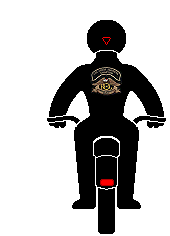 |
LEFT TURN
Raise your left arm horizontal with your elbow fully extended.
|
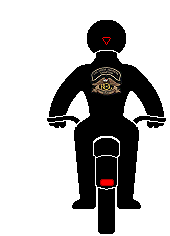 |
RIGHT TURN
Raise your left arm horizontal with your elbow bent 90 degrees vertically.
|
|
 |
HAZARD LEFT
Extend your left arm at a 45 degree angle and point towards the hazard.
|
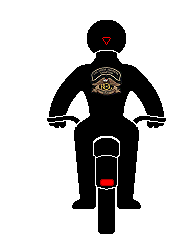 |
HAZARD RIGHT
Extend your left arm upward at a 45 degree angle with your elbow bent to 90 degrees and point towards the hazard over your helmet.
|
|
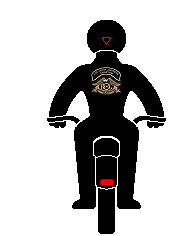 |
STAGGERED or SIDE-BY-SIDE FORMATION
Extend your left arm upward at a 45 degree angle with your index and pinkie finger extended. This indicate that it is safe to return to staggered formation.
|
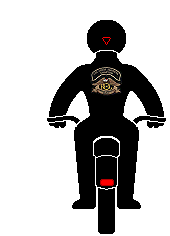 |
SINGLE FILE
Position your left hand over your helmet with your fingers extended upward. This indicates the leader wants the group in a single file formation. Usually this is done for safety reasons.
|
|
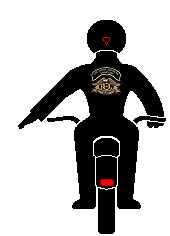 |
SLOW DOWN
Extend your left arm at a 45 degree angle and move your hand up and down.
|
 |
STOP
Extend your left arm at a 45 degree angle with the palm of your hand facing rearward.
|
|